The Fully Concealed Door Handle Has Finally Cooled Off! Will Tesla's 'Arrogant Design' Be Phased Out?
![]() 09/22 2025
09/22 2025
![]() 515
515
It's only a matter of time before 'pseudo-demand designs' are phased out.
Tesla, once a trendsetter in new energy vehicle design with its concealed door handles, now finds itself at the center of controversy due to door handle issues.
According to foreign media 'Bloomberg', Tesla is redesigning its door handles after some owners reported that electronic door handle failures prevented them from opening their doors, even trapping children inside and necessitating window-breaking escapes.
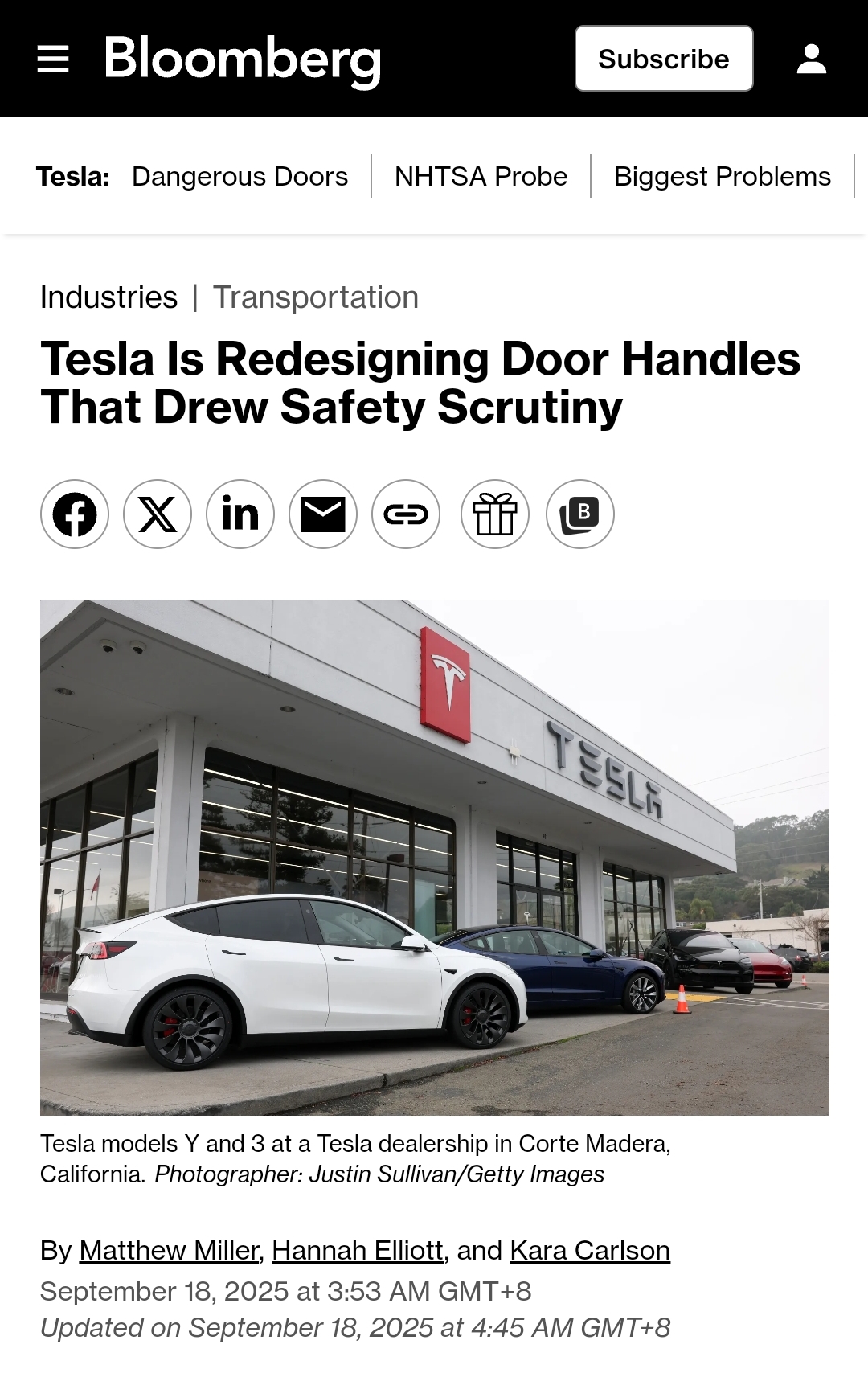
Screenshot: Bloomberg
Currently, U.S. agencies are investigating potential 'electronic door handle failures' in some Tesla electric vehicles, involving approximately 174,000 vehicles. If the door handle issues are ultimately deemed to pose an unreasonable risk to vehicles, the affected vehicles will face recalls.
Tesla popularized the concealed door handle design, which was quickly emulated by other automakers after the 2012 launch of the Tesla Model S. However, it now finds itself embroiled in a recall controversy over its own 'signature design', which is quite ironic.
Moreover, media outlet 'Mingjing Pro' revealed that discussions on a mandatory standard for door handles (i.e., national standards) are expected to conclude soon, potentially banning fully concealed door handles outright and allowing semi-concealed and traditional handles, which must include mechanical redundancy. A one-year transition period is expected, with implementation slated for July 2027.
In other words, if this information holds true, the fully concealed door handle design will be completely phased out within a few years.
Fully concealed door handles are not as safe as imagined!
Domestic controversies over fully concealed door handles persist, with supporters and opponents each holding firm views that have yet to persuade the other. Despite this, an increasing number of newly launched new energy vehicles are adopting fully concealed door handle designs.
From Electric Vehicle Today's perspective, concealed door handles are undoubtedly a controversial design, arguably without equal.
According to most automakers, the direct benefits of a fully concealed door handle design include reduced vehicle drag and energy consumption, as well as enhanced aesthetics, justifying the higher cost compared to traditional mechanical handles. However, from a consumer standpoint, the 'disadvantages outweigh the advantages', as door handles may freeze shut in winter, making them difficult to open. Many pure electric ride-hailing vehicles use fully concealed handles, but the popularity of 'door opening reminder stickers' on e-commerce platforms indicates that not all owners understand how to use concealed handles.

Screenshot: Taobao
Despite the theoretical advantages of concealed door handle designs, the inconveniences and troubles they bring during actual vehicle use often far outweigh these benefits.
Of course, the loudest controversies surround the safety issues of fully concealed door handles.
In addition to cases like Tesla's electronic door handle failures, instances of door handles pinching children's fingers are not uncommon. More concerningly, if a concealed door handle fails to pop out after an accident, it poses a serious safety hazard—a matter of life and death.
Electric Vehicle Today notes that automakers have recently strengthened safety promotions for concealed door handles, stating that the handles can pop open after collisions or in freezing conditions. However, the following two data points indicate that concealed door handles are not as stable after collisions:
Data from the National Automobile Accident In-Depth Investigation System (NAIS) shows a 47% year-on-year increase in traffic accidents caused by door handle failures in 2024, with concealed handles accounting for 82% of these incidents.
CIASI crash tests reveal that models equipped with electronic door handles have a door pop-out success rate of only 67% after side collisions, far lower than the 98% success rate of mechanical handles.
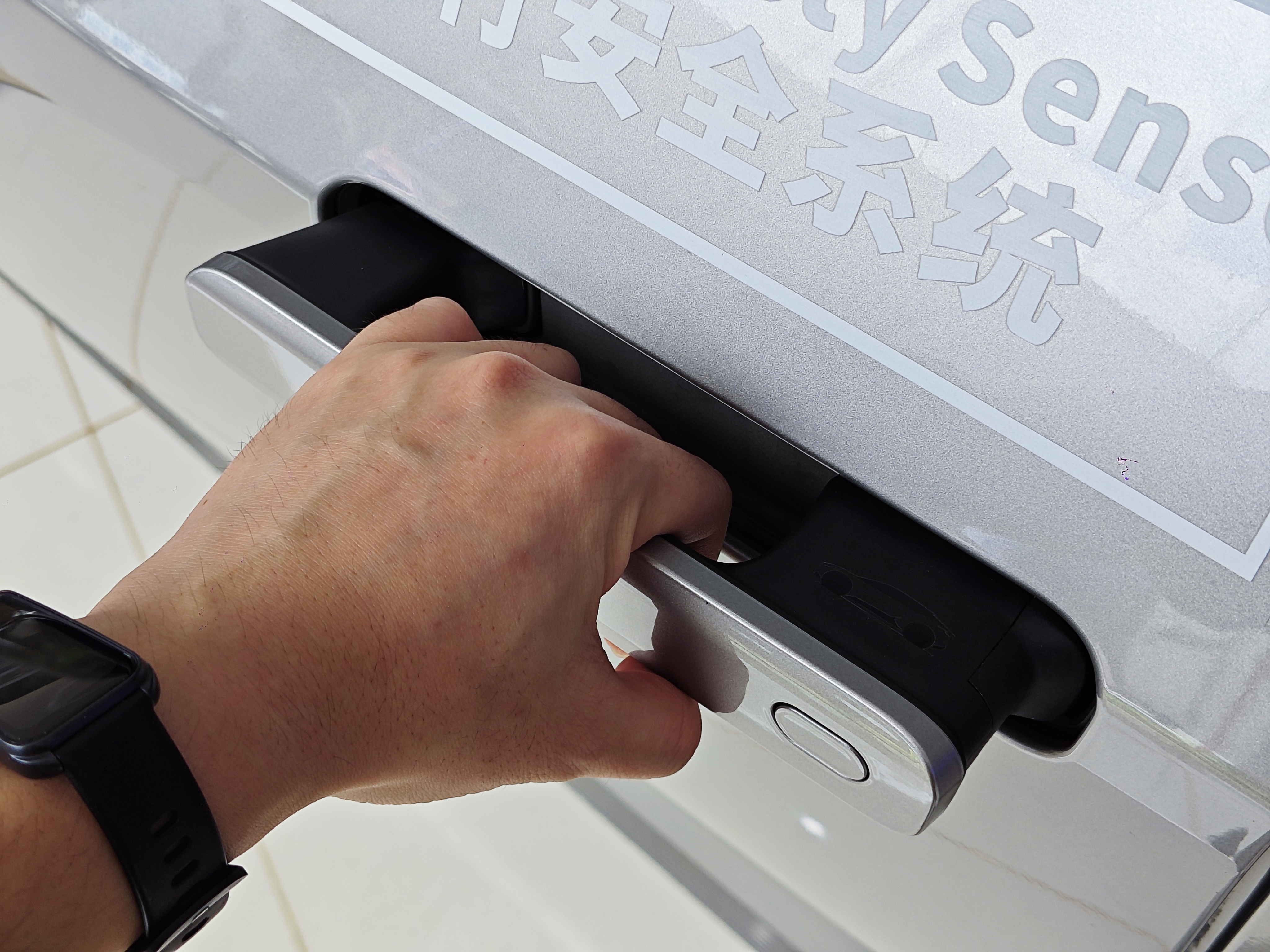
Source: Electric Vehicle Today
Every component of a vehicle relates to safety. Why have traditional mechanical pull-out door handles been consistently recognized by the market? Because this is valuable experience accumulated through numerous accidents.
According to the draft 'Safety Technical Requirements for Automobile Door Handles', all new vehicles must be equipped with 'dual safeguards', allowing passengers to manually open doors via mechanical devices even after electronic system failures. Specific regulations govern the shape, height, and size of emergency handles.
Design innovation is valuable, but safety boundaries must not be crossed.
Will semi-concealed door handles become the mainstream?
Every industry undergoes a similar development cycle: in the early stages, companies lack clear direction, leading to diverse and creative product designs. However, as the industry matures, products inevitably converge in terms of hardware and appearance.
Most design changes enhance users' driving and riding experiences. However, the concern arises when a design becomes mainstream, prompting other automakers to emulate it as a symbol of luxury and sophistication, ultimately leaving consumers with no other choices.
Concealed door handles exemplify this issue.
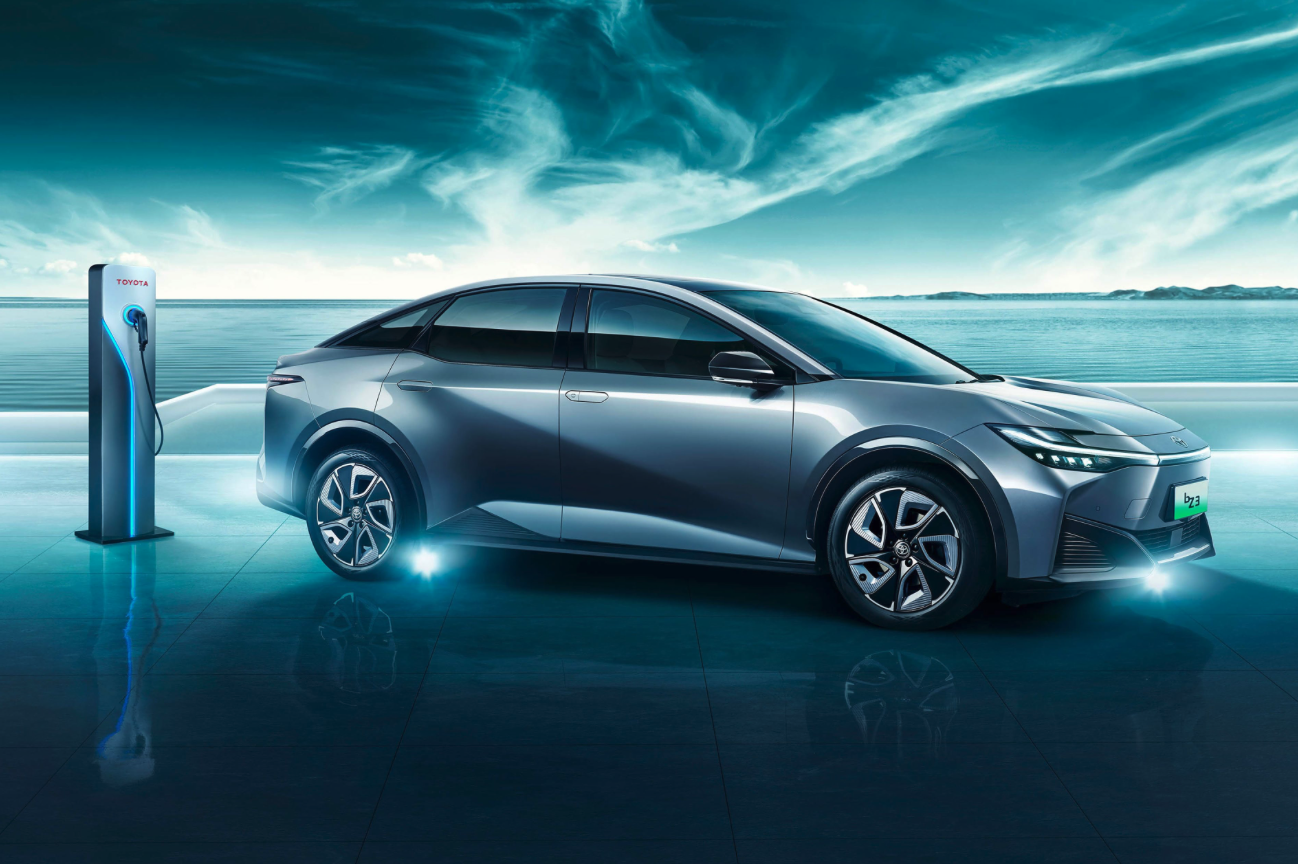
Source: FAW Toyota Official
Electric Vehicle Today has test-driven numerous new energy vehicles with fully concealed door handles and shares similar sentiments about their designs—they look trendy but are cumbersome to use.
Toyota's bZ3 inward-folding door handle has faced significant criticism within the industry. Electric Vehicle Today spoke with multiple ride-hailing drivers of the Toyota bZ3 and found that even with door reminders posted, they still spent time explaining to passengers how to open the doors and even encountered instances of passengers' fingers getting caught in the handle gaps.
If fully concealed door handle designs exit the market, automakers will be forced to reevaluate and adjust their product design logic. They may shift towards lower-cost traditional mechanical designs or opt for semi-concealed designs with a minimalist aesthetic, balancing aesthetics and safety.
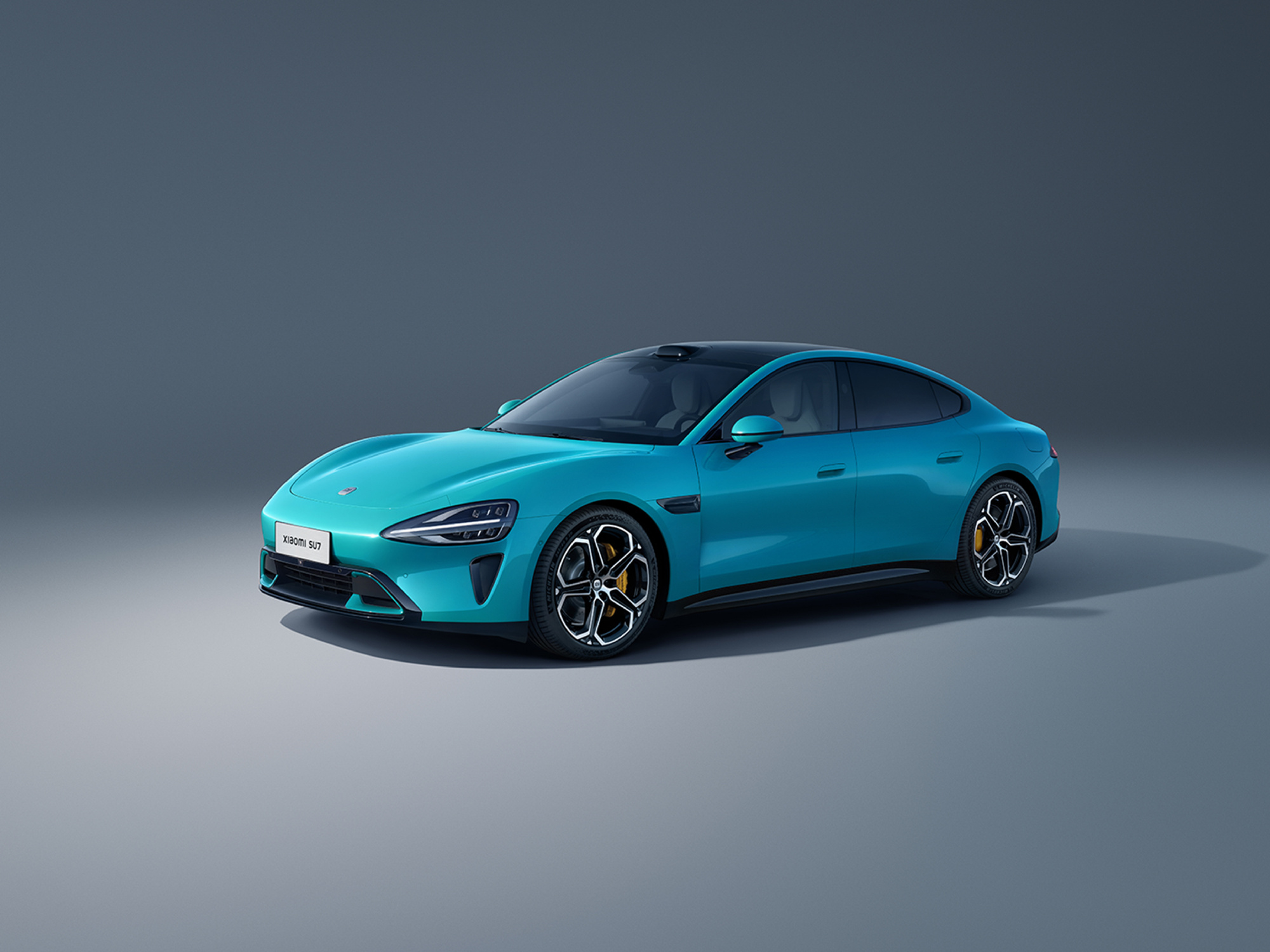
Source: Xiaomi Auto Official
Semi-concealed door handle designs may offer a perfect compromise. You might think of the design used in the Xiaomi SU7, but in Electric Vehicle Today's view, the first new energy vehicles to adopt semi-concealed handles with a good user experience were the Volkswagen ID. series.
Take the Volkswagen ID.4 CROZZ as an example: under normal circumstances, an electric switch inside the door handle, similar in feel to a daily trunk button, allows for easy opening. In emergencies, it can also be unlocked mechanically by pulling hard, with the keyhole retained to accommodate door opening needs in various scenarios.
Electric Vehicle Today notes that an increasing number of new vehicles are adopting semi-concealed door handle designs this year, such as the AITO M8, Chery Fengyun A9L, BYD Seal 06, Aion UT, FAW Audi Q6L e-tron, and the upcoming VOYAH Taishan. These models span different national origins and market positions, from domestic to joint ventures, and from sedans to SUVs, indicating that semi-concealed handles are gradually becoming a new trend in automotive design.

Source: Ministry of Industry and Information Technology
Of course, vehicle door opening methods extend beyond semi-concealed and traditional handles. Technologies like card access and facial recognition are also implemented in some models, with the AITO M9 even introducing a 'hands-free door opening' feature. These methods primarily aim to provide emotional value, allowing consumers to perceive the vehicle's technological or luxurious worth.
However, from a market-wide perspective, these relatively exaggerated door opening methods are unlikely to become mainstream. Semi-concealed and traditional mechanical door handles are more likely to emerge as the two dominant designs in the future market.
The Phasing Out of 'Pseudo-Demand Designs' in Electric Vehicles Is Only a Matter of Time
Electric Vehicle Today surveyed numerous netizens' complaints about 'pseudo-demand designs' in vehicles and found that, in addition to concealed door handles, physical buttons, AR-HUDs, and panoramic sunroofs have also faced criticism. However, from today's perspective, these features, once labeled as 'pseudo-demands', have gradually shed this negative reputation through continuous technological iteration and optimization, now providing tangible value to users.
Take physical buttons as an example: after the widespread adoption of large onboard screens in new energy vehicles, most physical buttons for adjusting air conditioning, volume, and wipers were eliminated, replaced by central screen operations or voice control. The greatest advantage of physical buttons lies in blind operation, allowing drivers to complete tasks without diverting their gaze from the road, relying solely on touch. The clear and forceful feedback of buttons effectively prevents driving distractions.
However, voice interaction technology has now matured significantly. During test drives of multiple new energy vehicles, Electric Vehicle Today found that voice recognition inaccuracies are rarely an issue, largely compensating for the inconvenience caused by the elimination of physical buttons. For users not fluent in Mandarin, most models retain physical buttons for frequently used functions like air conditioning.
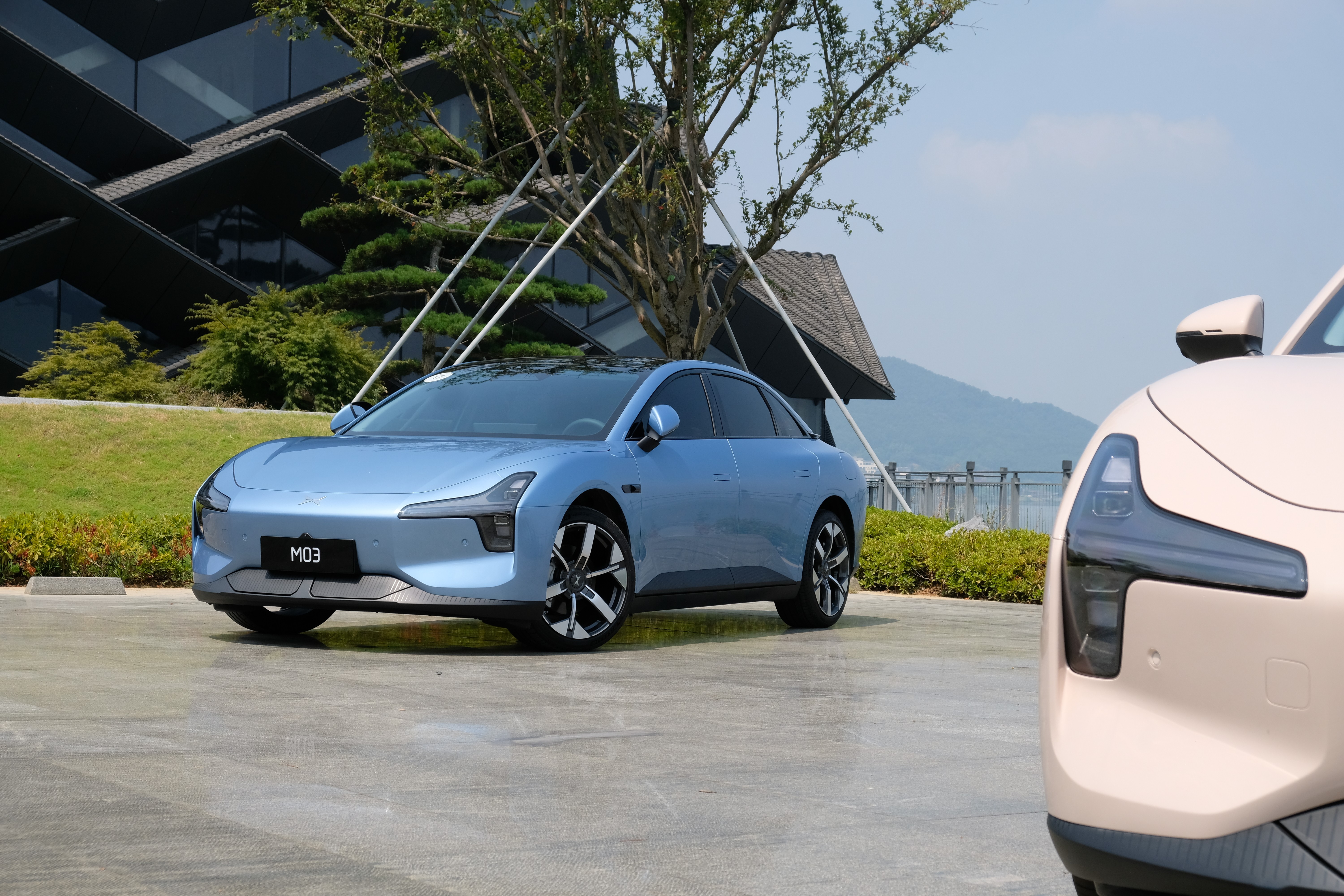
Source: Electric Vehicle Today
Another example is the multi-screen rear design, which some netizens consider a 'pseudo-demand'. Electric Vehicle Today notes that an increasing number of users are now working or entertaining themselves in vehicles, with many models opening up application ecosystems to provide previously unimaginable experiences like gaming, gradually demonstrating the value of multi-screen rear designs.
Ultimately, different users have vastly different demands for vehicles, leading to varied perceptions of what constitutes a 'pseudo-demand'. Which features will be favored by consumers and which will be phased out by the market must ultimately be decided by the market itself.
Of course, we must acknowledge that some automakers in the industry, lacking core competitiveness, attempt to attract consumers by creating demands, fabricating user needs, and adding product selling points. Electric Vehicle Today believes that only by excelling in core experiences like three-electric systems, assisted driving, intelligent cockpits, and human-vehicle interaction can automakers maintain long-term competitiveness in the fiercely competitive automotive market and stand invincible.
(Cover image source: Electric Vehicle Today)








